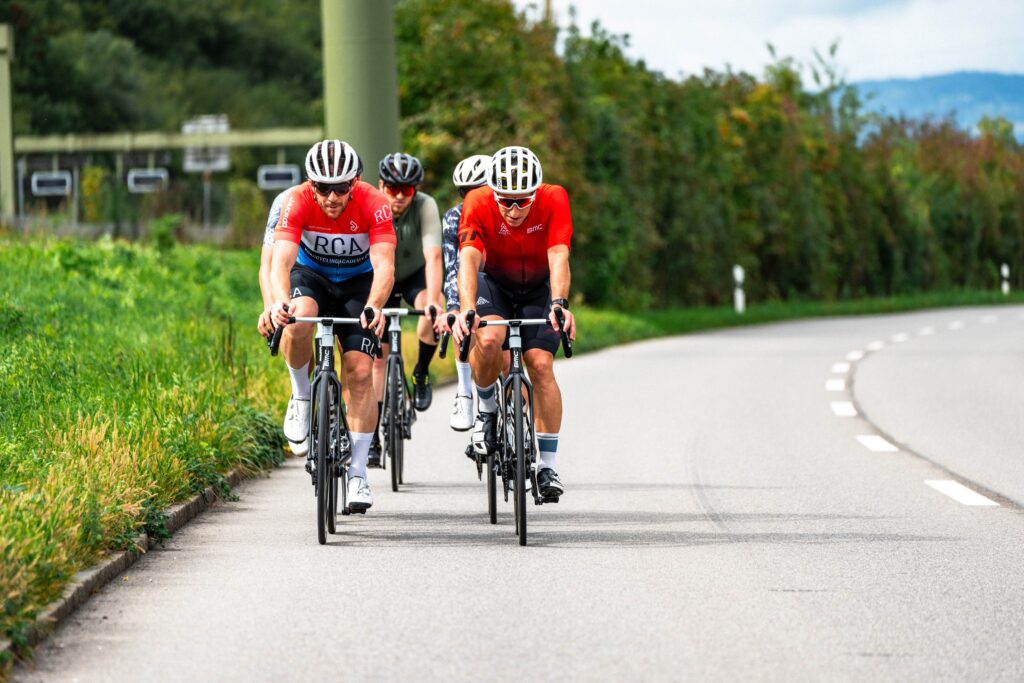Here’s my experience using a mix of both training philosophies.

If you’ve reached a plateau in your training or are bored of your usual routine, you might want to adopt a new training method. Or what I should say is, combining two old / well-established training methods and combining them into what is a relatively new way of training.
Recently, I changed my training method from a strictly polarized approach to a mix of pyramidal and polarized training.
This blog post is less about what polarized and pyramidal training are — but instead about my experience as a 41-year-old male with a family and limited training time (10-12 hours per week) and my success using a mix of both training philosophies. That just so happens to be backed by research too, which we’ll discuss shortly.
By the end of this post, you’ll hopefully better understand the two concepts and might just want to try something similar in your training.
What is polarized training?
I know I said this blog is not about the training concepts, but a few quick definitions of the training models will ensure you’re on the right page to get the most out of this article.
The polarized training model consists of mainly low-intensity training combined with high-intensity efforts. It’s often referred to as the 80/20 training method, where 80% of your training is on the lower side, and 20% is at high intensities. Meaning, there is very little to no moderate-intensity training, also known as tempo, sweet spot, and sub-threshold. Training zones that sit somewhere around 75-95% of FTP. Give or take a little.
What is pyramidal training?
Pyramidal training is similar to polarized training in that a large percentage of your training is done at low intensity — but there is one key difference: pyramidal training includes those moderate intensity efforts mentioned above.
While there is no clearly defined zone distribution with pyramidal training – unlike the 80/20 principle with polarized – a rough range could be something along the lines of 65% of training time spent at low intensity, 25% at moderate intensity, and 10% at high intensities.
A blend of both training philosophies
Okay, definitions out of the way — here’s a little background.

In over ten years of structured cycling training, I’ve been more of a polarized training guy. I personally turned my nose up at Sweet Spot training for the longest time. I preferred the base zone 2 rides and high-intensity circa VO2 Max efforts. It’s what worked best for me.
But earlier this year, head RCA coach, Ryan Thomas, put me through a 12-week structured high-intensity interval training (HIIT) plan. Unlike my usual preference for polarized training, the plan Ryan prescribed was a mix of polarized and pyramidal training.
I was skeptical but willing to try something new!
For the first 6-8 weeks of the plan, I followed more of a traditional pyramidal model. This included a solid amount of riding in zone 2 (60-70% of FTP) to build that aerobic base and then other efforts at circa 90% of FTP for sustained efforts. On the weekends, I was still maintaining my group rides, which gave me that top end intensity.
In the remaining 4-6 weeks of the plan, we switched to a more traditional polarized model.
For example, in the first half of the training block, my HIIT sessions were predominantly sweet spot efforts, lots of zone 2 rides, and the weekend group ride.. In the second half of the training block, my dedicated sweet spot HIIT sessions become V02 Max, and Anaerobic HIIT sessions. While, of course, always maintaining those zone two base rides.
So what were the results? I achieved personal bests in three of four key power-to-weight segments at 41 years old. And I also had some great racing results. You can find out more about my training and how I hit my all-time best power-to-weight numbers in the video below.
What does the science say?
After experiencing the best training adaptations within my 10-year journey with structured training, a deep dive into the science was needed to see if a mix of pyramidal and polarized training was as good as I initially thought.
A recent study from 2021 investigated the effects of a 16-week pyramidal and polarized training program on well-trained endurance runners. Participants were assigned to one of four groups:
- Polarized training
- Pyramidal training
- Polarized followed by pyramidal (8 weeks each)
- Pyramidal followed by polarized (8 weeks each)
Authors concluded that the endurance runners who followed a pyramidal training model followed by the polarized approach experienced the maximum performance improvements (including relative peak oxygen consumption, blood lactate concentration, and 5km time trial performance).
Although I did a cycling plan rather than a running one, my cycling results are in line with current scientific literature. That’s another box ticked as to why I responded so well to this type of training.
Next time, perhaps a 16 week training block would be more beneficial as well — spending 8 weeks following the pyramidal model and the following 8 weeks the polarized training philosophy.
Polarized or pyramidal, which one to choose?

Sometimes, to make progress, you have to switch up your routines. For years, I trained almost exclusively using the polarized approach — prioritizing lots of zone 2 aerobic endurance rides and very high intensity VO2 Max efforts.
But by changing up my training and adopting a hybrid approach of pyramidal followed by the polarized model, I made the best progress I have in years.
If you haven’t seen progress lately, perhaps a change in your training approach could be what you need. Why not try 4 weeks of pyramidal training followed up with some polarized work? Let the results speak for themselves.
And if creating your own training plan isn’t your thing, then let the RCA take care of that for you.
Apply for membership for the Uplevel Road Cycling Course and break through that plateau to start breaking personal bests (again).

